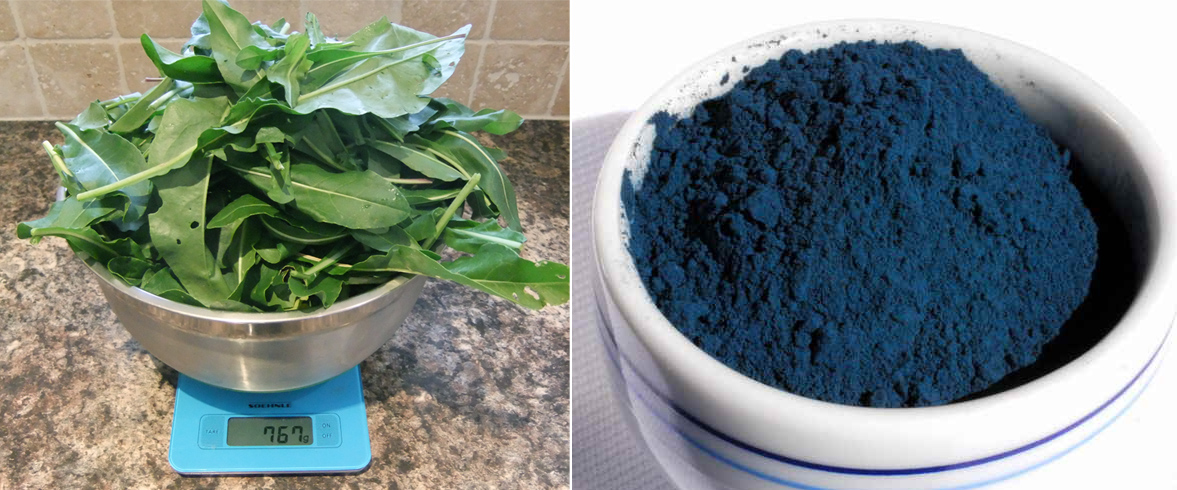“The end of summer is generally the time when a lot of us are digging up our main crops, preserving vegetables and drying the last of the herbs.
The same goes for me and especially so when it comes to preparing enough botanicals for use in my handmade soaps and beauty products. Lavender buds are drying in bunches, Calendula petals have been plucked and my woad plants are now mature enough to extract the natural blue pigment that they secret away in their leaves.
Originating on the steppes of central Asia, Woad, also known by its Latin name Isatis Tinctoria, has been cultivated throughout Europe and the Mediterranean for millennia. Though its seeds have been found in French Neolithic sites, the first evidence of it being used in the dyeing of cloth comes from ancient Egypt…”

